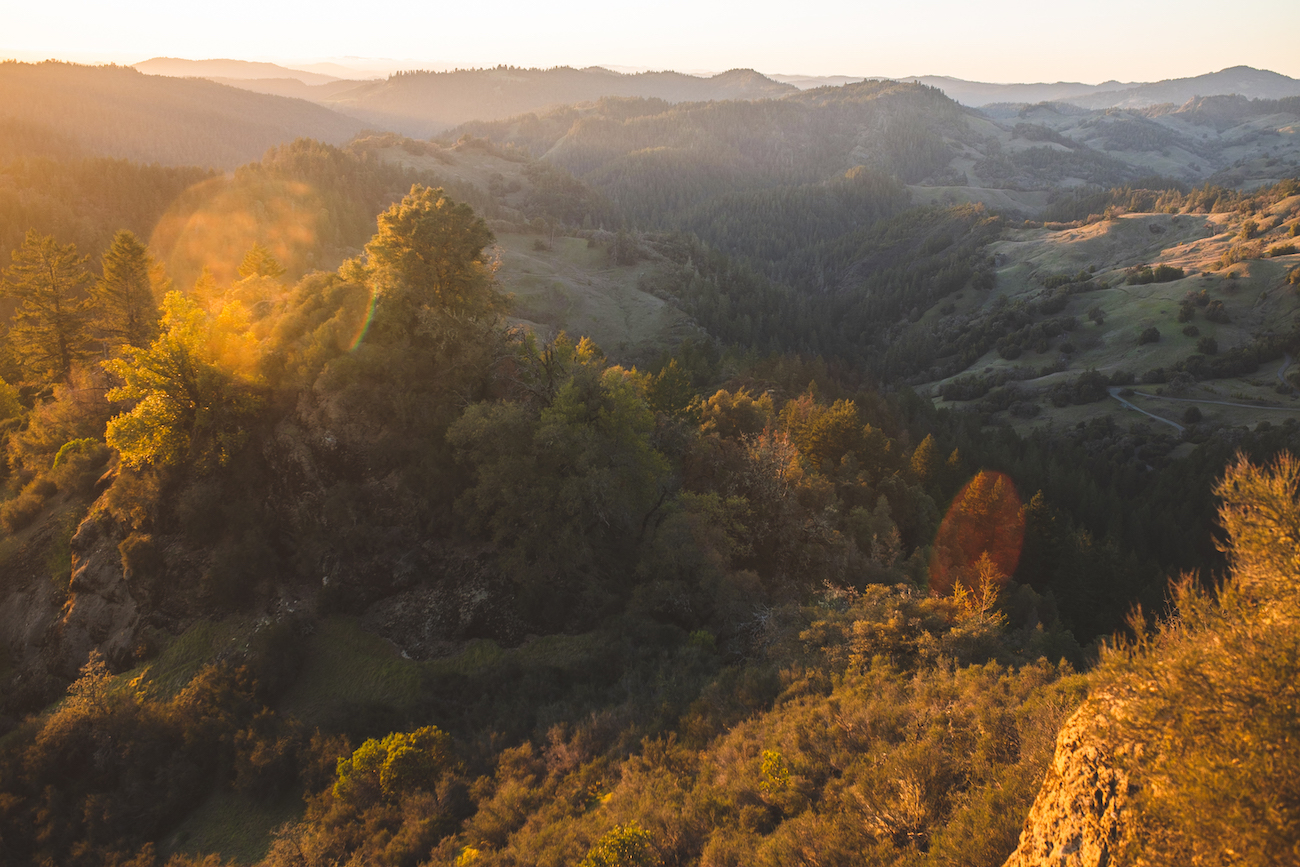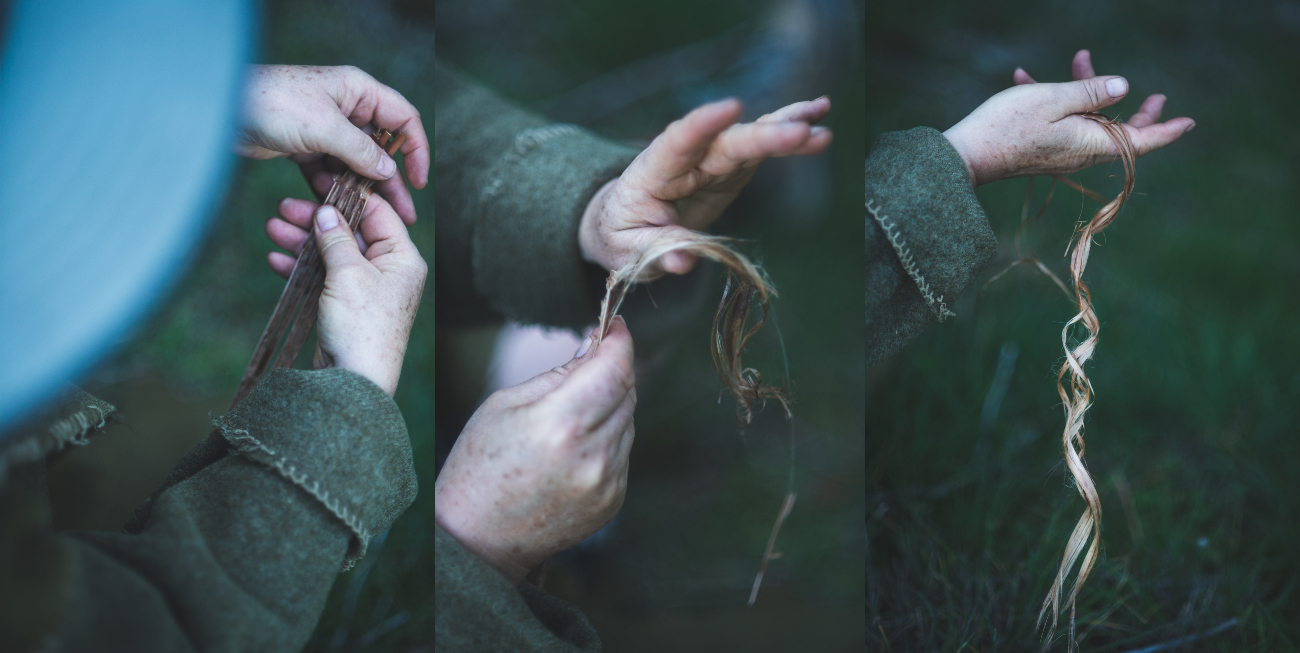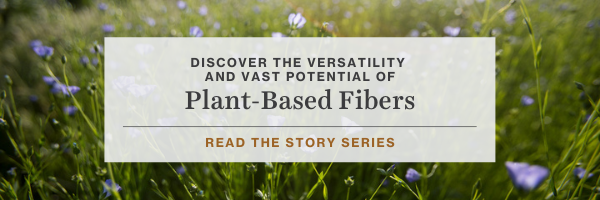Written & photographed by Koa Kalish

If you have ever had the pleasure of meeting Tamara Wilder of Paleotechnics, you will know her by the gentle, kind, strong, and wise temperament that emits through her speech, hands, and entire being. When speaking with her, you might feel like you are speaking with a tree, a fern; nature herself. Incredibly humble and yet, an expert in her field — Tamara’s legendary work has reached thousands of people.
Growing up, Tamara always knew herself to be an artist. She sought to become one in college but felt extremely sensitive to the high degree of consumption and toxicity wrapped up within the art world. She did her best to navigate making art in more natural, balanced, and earth-based ways. When she was 19, she was invited to her first earth skills gathering, the Glass Buttes Knap-In, an annual flintknapping event in the high desert of Eastern Oregon. It was there that she was first taught how to make string — a task that would later become one of her life’s greatest devotions.
Learning the ancient skills completely fulfilled her desire for functional craft and art in a way that she had never dreamed. “After that first gathering, I was hooked,” Tamara reflects. “Following that… is how I got here.” Flash forward 32 years, and Tamara now stands on the mountain where she calls home. She purchased 40 acres in Mendocino County and cared for this piece of land for the last 15 years. It has rare access to open space and walking trails for miles.

“This has been a huge project in stewardship,” Tamara says. Tamara plans to integrate and encourage native fiber plants to grow, thereby working slowly and deliberately building sustainable natural systems. “This is a place to steward to have native fibers available. Even if I’m not producing enough to sell, native fibers are wild fibers.” Tamara aims to cultivate just enough wild fibers to use for education, for visiting groups, a few times a year, as well as for more intensive workshops to come in the future. The land is resourced with solar power, spring water, a solar cooker, and a hot tub heated via an experimental thermosyphon heating system off of her wood stove and solar thermal tubing.
For the last 20 years, Tamara has developed a hands-on basics skills program focused mainly on children in the 6th grade, as that is when schools teach the themed curriculum of ancient civilizations. The program focuses on the evolution of hunting technology and involves string making, rope making, fire making, hand drilling, stone shaping, polishing, and oiling. With four 45-minute stations, the children immerse in one activity and then rotate to the next. They learn to hand drill holes in soapstone, making their own bead. They learn to use a willow drill with a bamboo cutting edge. They shape and polish the stone with horsetail sticks. Using either animal fat or a homemade salve of coconut oil and beeswax, they oil their stone bead to bring out the colors. Once they make a bead, they move to make a string for their necklace from hemp twine and try their hands at friction fire-making. Focused groups working together sometimes even succeed at making hand drill fire which is a huge accomplishment!

You will find Tamara teaching these skills to different 6th graders throughout Sonoma County and Northern California every fall. For those three months of autumn, she works extensively with both public school and private school children — making an impression on thousands of kids every year. “Children are our hope for the future. I’ve always believed that,” says Tamara. “Enlightening people or letting them discover new things that they never knew, even if it’s only one day — it can change their lives. I often get the feedback that the kids say it is their ‘best day ever,’ and that years later, they still remember that day and often keep their necklaces for a long time. Just one day affects the rest of their lives,” she says. “That’s why I do what I do.”
When weaving guilds caught wind that Tamara could make 2-ply string from fiber with the leg-rolling method, they started hiring her to come to their meetings for string-making demos and workshops. This led to Tamara displaying her own booth at various wool and fiber fairs, including at Fibershed’s Wool and Fine Fiber Symposium. Her displays always draw the curious. Her table is packed with magical treasures — fibers laid out in earthen rainbow colors. Tamara is unique in the fiber world as she focuses on wild plant fibers, with a little sinew and a little wool added in for demonstration purposes.

“I’ve always been into string. It’s the structure of life,” she says. She is fascinated with the geometry of nature and how children (or adults) can work together to make string. A parent volunteer several years ago told her, “I’m a theoretical physicist, and this is a perfect model of how our DNA forms our chromosomes!” which helped her better understand how the spin is about binding and storing energy. She explains, “then when we ply the string, it grabs itself, and it can’t unspin. A single-ply slowly tries to undo itself, while two-ply or three-ply locks together.”
Not only is this geometry, physics, and science, it is also useful, beautiful, and functional art. “Twisting and locking happen naturally because our DNA is the double helix, always spiraling. It folds, twists and locks to make a chromosome shape.” There is something that feels so natural and utterly human about making string.

“String is so ultimately important,” Tamara says. “The ability to make string and make fire are two of the earliest things our ancestors were able to come up with by at least 300,000 years ago. Without those two skills, we would not have been able to become modern human beings. Every human on the earth used to know how to make a string. It was essential. Now, we just think the machines make it for us.”
Tamara’s most preferred fiber for making string is dogbane. Dogbane is an incredibly unique regional fiber native to North America. “It’s the predominant fiber used by Native Americans all over the United States,” she explains. Dogbane is on par with hemp and flax for its quality, making it one of the top three fibers worldwide. Although it has been cultivated experimentally in Russia, it hasn’t been grown commercially anywhere else. Extra rot-resistant dogbane has even been used for fishing nets. It is also fairly simple to process. “You can go from raw stalk to finished string in just a few short steps,” she says.

Tamara’s work has usually been created on the road or at events, using wildcrafted materials gathered in her travels. But soon, she will be building a shop to create more from on her own land. Among the many crafts sold at events and through her online Paleo Store are malas, necklaces, and garlands (made out of madrone berries with dogbane tassels), her handmade hunting tool practice sets (a hoop and pole game with hoops of hazelwood laced with sheepskin rawhide), and the book she co-authored (“Buckskin, the Ancient Art of Brain Tanning”) of which she is currently in the process of digitizing. Tamara’s other work includes being commissioned to make dogbane string replications for museums.
Find more about her incredible offerings at www.paleotechnics.com.

